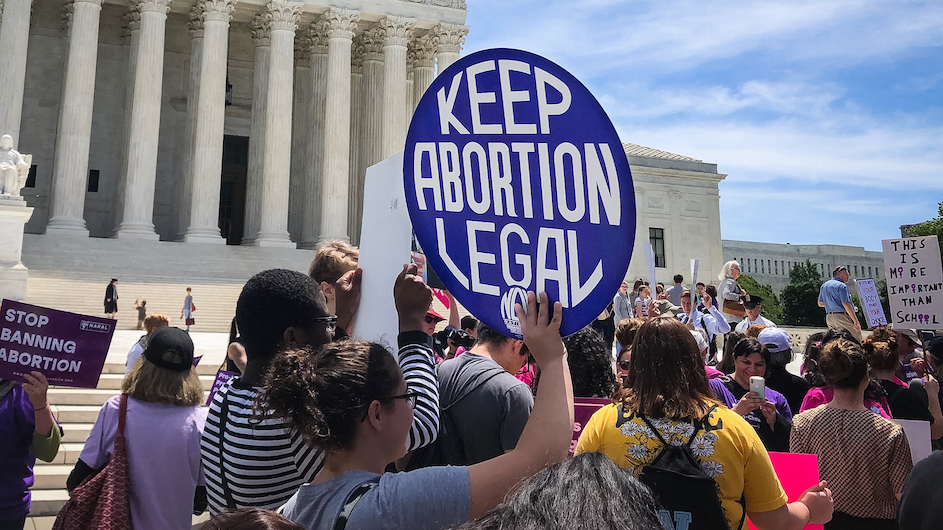What are the implications of the U.S. Supreme Court overturning a 1973 ruling on the right to abortion?
The story so far: The U.S. Supreme Court on Friday overturned the constitutional right to abortion and overturned the landmark 1973 Roe v. Wade decision that established a woman’s right to her body. In his ruling, the conservative-dominated United States Supreme Court (SCOTUS) said, “The Constitution does not grant the right to abortion;…and the authority to regulate abortion is returned to the people and their elected representatives.” The 6-3 verdict reiterated a draft opinion leaked in early May that claimed the SCOTUS would vote to abolish the right to abortion. Also quashed on Friday was Planned Parenthood vs. Casey, a 1992 case that Roe confirmed. While anti-abortion led by former President Donald Trump applauded the verdict, agency advocates and women’s rights groups rejected the move, calling it a “horrific decision with devastating consequences.” According to the Guttmacher Institute, an abortion rights research group, 26 states (out of 50) are certain or likely to ban abortion; in at least 13 states, the ban will go into effect soon.

How did it originate?
The Roe v. Wade judgment had lowered state-level abortion limits for a fetus before it is viable to survive outside the womb, which is considered the 24-28 week mark. Judge Samuel Alito, a conservative appointed by George W. Bush, wrote Friday before the majority in the Dobbs vs. Jackson Women’s Health Organization: “We believe that Roe and Casey should be overruled. The Due Process Clause of the 14th Amendment protects, among other things, the right to marry, the right to use contraception and the right to abortion. The Constitution does not mention abortion, and such a right is not implicitly protected by any constitutional provision, including those on which the defenders of Roe and Casey rely — now primarily — the Due Process Clause of the Fourteenth Amendment.”
In 1969, a Texas resident, Norma McCorvey, requested an abortion when she was five months pregnant and went to court because Texas banned abortion except when it could be performed to kill a woman. Save mother. The pseudonym she chose was Jane Roe, Roe v. Wade, after the Dallas district attorney Henry Wade, the defendant in the case. In 1973, when the case went on appeal to the Supreme Court, SCOTUS ruled 7-2 to recognize abortion as a constitutional right in the U.S.
After the Roe v. Wade judgment, there was a right to abortion in the first three months (trimester) of pregnancy; some restrictions were placed in the second trimester; and in the third trimester, states could limit or prohibit abortions as the fetus approached the point at which it could live outside the womb, except in cases where the mother’s life and health were endangered. Later, in the 1992 Planned Parenthood vs. Casey case, the SCOTUS rejected the “trimester” system but retained Roe’s “essential property,” establishing women’s constitutional right to abortions until the fetus could live outside the womb. There are nine justices on the U.S. Supreme Court, six appointed by Republican presidents. Overthrowing the right to abortion was a campaign pledge from Mr. Trump. During his four years as president, he appointed three judges — Neil Gorsuch in 2017, Brett Kavanaugh in 2018, and Amy Comey Barrett in 2020 — to give the SCOTUS a 6 -3 conservative majority.
Why does it matter?
The U.S. on Friday joined three other countries — El Salvador, Nicaragua, and Poland — that have rolled back abortion rights since 1994, according to the Center for Reproductive Rights. The Guttmacher Institute points out that years of research have shown that abortion bans seriously affect people from marginalized groups who already struggle to access health care, including abortion.
Michelle Bachelet, the U.N. High Commissioner for Human Rights, said in a statement that the verdict is a “major setback” for sexual and reproductive health in the U.S. The United Nations Agency for Sexual and Reproductive Health (UNFPA) and the World Health Organization (WHO) noted that as many as 45% of all abortions worldwide are unsafe, making the procedure a leading cause of maternal death. The UNFPA said it fears there will be more unsafe abortions worldwide as access becomes more restricted.
In a commentary for The Conversation, Gretchen Ely of the University of Tennessee suggests that this will put the U.S. on a similar path to Ireland between 1983 and 2018. She writes that Irish law has led to extended suffering for many Irish women, documented in a series of lawsuits that helped turn the tide of opinion toward legalization. These include the tragedy of Savita Halappanavar, a 31-year-old woman who was forced to misbehave with a non-viable fetus instead of terminating the pregnancy with medical attention, which resulted in her death.
What happens now?
Thirteen states have “trigger bans,” meaning abortions are banned under most circumstances and will come into full effect with Roe’s overthrow. Of the 13, Missouri was the first to enact the “trigger law” banning abortion. Women seeking an abortion must travel to states where it is legal, making it expensive and unavailable to everyone. With midterm elections in November, Democrats will lean on the abortion issue to urge pro-choice women to vote for them. But despite President Joe Biden’s appeal that the only way “we can guarantee a woman’s right to choose … is for Congress to restore Roe v. Wade’s protection as federal law,” he admitted that it Congress “as it seems, the votes” to pass that kind of legislation. With Roe being overthrown, activists are already concerned that the verdict could have a knock-on effect on other rights, such as birth control and same-sex marriage.

